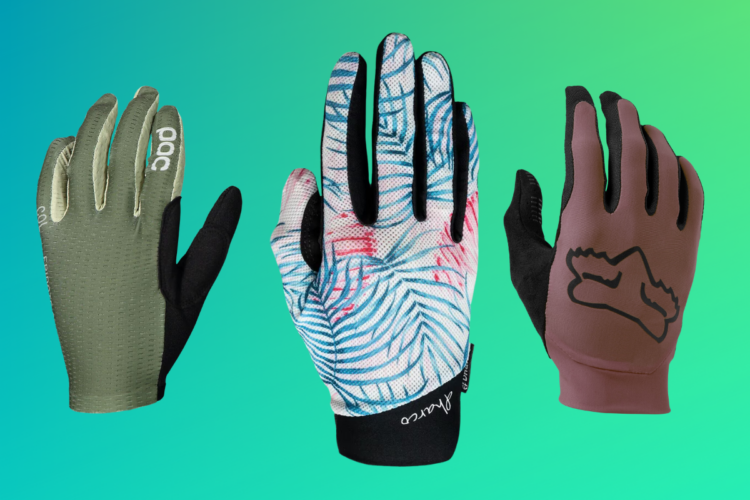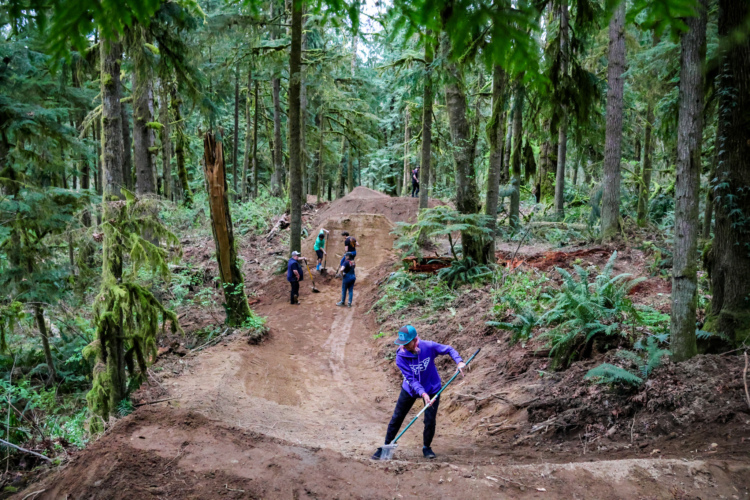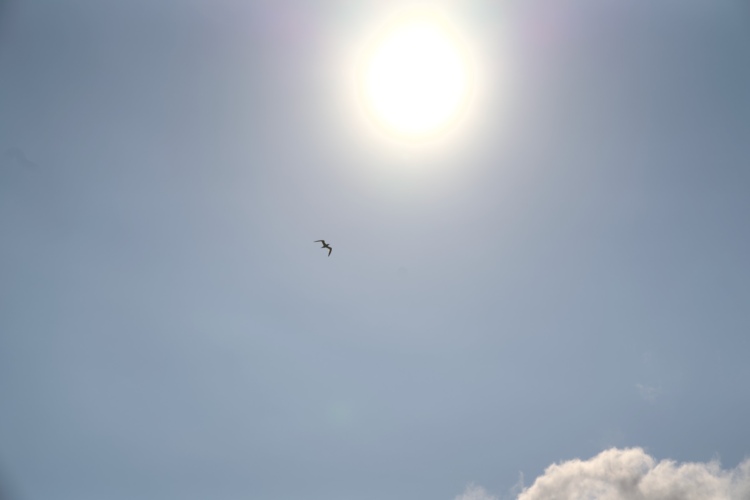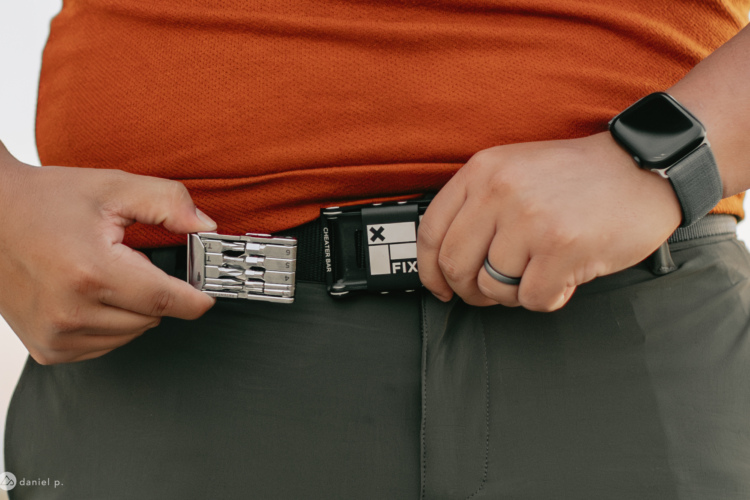BC Bike Race (BCBR) is a 7-day, cross-country stage race, set in British Columbia, Canada. The race is well known for its technical singletrack stages in a world-class riding location, and had been on my bucket list for quite some time. So in October of 2023, I decided that 2024 was my year.
The average BCBR stage is about 40km-long with 1,000m of elevation gain—that’s 25 miles and 3,300ft, in freedom units—and the biggest days are just shy of 50km with around 1,500m of climbing. They’re not the world’s biggest days, but they’re not to be taken lightly either. And don’t forget, it’s a race; riding those stages is one thing, racing them is something else altogether. So, I’d better get training if I wanted to do well.

With eight months to go, there was plenty of time to get in shape to do well at BC Bike Race. My plan was to train like I’d never trained before, acquire an XC bike, and try to place as well as I could. Given that I’d never really trained for a race before, doing any training at all would be novel for me. I tend to have pretty good baseline fitness though, and I knock out some pretty big rides on my weekends, so completing the stages was never a worry for me. I wanted to build up some race fitness though, so I could put some real power down and have a chance at being competitive.
Since this was my first time training properly for a race, I opted to buy an indoor bike trainer, a Wahoo Kickr Core. This would make it easier to train effectively since the trainer has a built-in power meter, and combined with a heart rate monitor, I could build some training plans and track my progress. Since the trainer came with a discounted Zwift membership, I decided to give it a try. The gamification of training appealed to me; though I had the goal of BCBR to work towards, I tend to need motivation to train.
After conversations around the level of fitness I would need at BCBR with previous participants, it sounded like a good tactic would be to work on my power, so I could pull ahead on the road/gravel sections at the start of each day and beat people to the singletrack. I decided that an ‘FTP booster’ training plan would be a good place to start. FTP, standing for Functional Threshold Power, is essentially the power, in Watts, below which you can hold for an hour before exhaustion, and is a good starting point to measure endurance. Since BCBR days could be anywhere from one to four hours long, this seemed like a good metric to target.

Below – after. Note peak power is 44w higher
I completed the 12-week plan a little over schedule, since I was squeezing in real-world rides around it, but saw measurable results afterward, with about a 20% increase in FTP to 226W. Tested using a ramp test before and after, FTP is a function of peak power that Zwift calculates. This was great progress, and a good baseline to start some more targeted endurance training. During a rest week from the intense training, on Feb 10 I went for a local ride with a buddy, checking out a freshly rebuilt trail, Cambodia on Mount Seymour, followed by a solo lap of Mount Fromme.
While descending lower Fromme trail Lower Expresso, a blue trail I know inside-out, I blew my right foot off the pedal on the landing of a jump, trapping it between the crank and the ground. Instantly feeling a numb sensation in my foot, I pulled over and sat down, hoping it would return to normal, while several riders passed by me asking if I was okay. I figured I had sprained my ankle, so I decided to try and ride home. I couldn’t put any weight on my right foot so I coasted the rest of the way home, clipped in with my left foot, pedaling when needed. Thankfully it was net downhill home from there, about 4km away.



After making it home and somehow managing to get my bike inside, up and down a flight of stairs, and taking a shower, it was when I tried to put on a sock that I figured something was really wrong. So I called my buddy Brett to give me a ride to the emergency room (thank you) where, after a couple of hours of waiting and an X-ray, I was told I had a ‘Weber c’ Fibular fracture in my right leg, close to the ankle, and would require surgery to stabilize it. When told I would be back to ‘aggressive riding’ in six months, the optimist in me had already decided I’d be attending BC Bike Race in four and a half; I wasn’t going to let a broken leg hold me back.
Following a Valentine’s Day surgery where I received a plate and some screws, the prognosis was six weeks in a cast/boot, and figuring out how to walk again after that. During recovery, I made sure to follow the doctor’s orders and keep all my weight off the leg, while ensuring I ate and drank well to give myself the best chance at recovery. Late March saw the boot come off and gave me three months to prepare for BCBR.
The surgeon, Dr. Richard Nadeau, told me that the bone was “95% healed” at this point, and that it would take until a year post-break to be at 100% strength. “The main risk is re-injury,” he explained. Nadeau was confident, however, that I would make it to BCBR, given my baseline fitness, but that I should do my best to prevent re-injuring the leg.


Walking was more of a challenge than I expected, as I’d lost a lot of muscle mass in my right calf and foot. However, a visit to my physiotherapist, Andrew Flynn, put me on the right track. Echoing the thoughts of Dr. Nadeau, he surmised that I would likely make it to BCBR, the main risk being re-injuring the broken bone, but that if I worked at strengthening my leg, I should be able to take part.
Flynn worked with me to improve the flexibility in my injured leg, which had very little movement or strength at first, through massage, IMS, and daily exercises. Starting with easy stretches such as writing the alphabet with my toes, balancing on one leg, and gastrocnemius (calf) stretches, as my strength improved, he prescribed calf raises, while continuing the massage and IMS.
After around three weeks, I was able to ride a gravel bike again, and around five weeks later I was back on a mountain bike and my gait was somewhat normal. Walking was harder than cycling for me, as the flexibility in my ankle was quite limited for a while. At this point, I knew I was going to get to BCBR, but my training had taken a back seat, so I was going to have to rely on my baseline fitness to carry me through.
There still remained questions around pain, since flat drops and big compressions in the trail were painful in my ankle still, so I wasn’t quite up to full riding capacity, though getting close. A three-week vacation to the UK further hampered my training plans, leaving me about three weeks to acclimate to some bigger rides through June. However, upon returning, any pain from riding had pretty much gone. I guess time was all I needed; I was able to ride aggressively again, though still being careful to keep things rubber side down.

After a few weekends of 40km+ rides, and a final week of four big, back-to-back days, I felt as ready as I could be. The only thing left was to gather spare parts and nutrition, and tune up my Santa Cruz Tallboy ready for the race. Having never ridden a stage race before, or even an XC race outside of the British Universities & Colleges Student Champs about ten years ago, I never really felt ‘ready,’, but on June 30th I headed to Vancouver Island to give it my best.
The prologue rolled around on Monday July 1st in Victoria, and I headed to the start line 8km in, and rode the following 7km of technical singletrack, putting down a good enough time for 113th place out of some 480 riders. With a little wind in my sails now, I felt somewhat confident in the next couple of days racing. I pushed a little harder the next day while leaving some in the tank for the rest of the week, placing 131st. At this point, my ankle fracture was no longer a concern, and left my general fitness as the main question.
The queen stage on day three took on two mountains in Crofton: Tzouhalem and Maple. The stage was over 50km-long and included 1,500m elevation, albeit on super fun and flowy trails. It was still a big day and, feeling pretty tired, I landed in 135th place. I was consistent, if nothing else. Day four in Nanaimo saw me get stuck behind a large group of riders at the first pinch point, unable to pass people for quite some time, and set me back to 164th place. The day being a little shorter than anticipated meant that I had a lot left in the tank and I felt pretty good at the end of the race, so I was ready to push harder the following day.

Day five in Cumberland was my best day, with technical singletrack both up and down. Feeling good in my legs, I really found my flow state that day, passing a ton of riders both up and downhill. With little drama, and only a quick stop at the aid station to refill my water bottle, I came in at 108th place. Riding that high the following day in Campbell river, I pushed hard again. A more typical XC-style course and not my usual style of ride, there was minimal elevation gain over the 45km, but I just kept on the gas the whole day to keep my place among the crowd of XC racers on shorter-travel bikes, and held onto 117th place.
I started the final day, in Cumberland again, with pretty tired legs from the previous day’s effort. I think most riders had the same tactic on day seven: empty the tank and give it everything. I had little left to give on the climbs thanks to the previous day’s efforts, but I left everything out there, and gave ‘er on the technical singletrack. Finishing in a respectable 134th place, it was good enough for 126th overall for the week, a result I couldn’t be happier with.
My journey from broken leg to racing BCBR four and a half months later was one of ups and downs. I had my doubts, as anyone would, and was disappointed that I wouldn’t be able to perform as I had initially hoped, but saw it as an opportunity to prove to myself how resilient and strong I could be. I’m far from being a pro racer, so any competition was only ever going to be with myself. When I set my mind to something, I usually get it done, and making it to the BCBR start line was one of my biggest challenges, both mentally and physically. Having the support from those around me the last few months meant a lot, and helped spur me on to get there.

The competition and community around me at the race was a huge motivation, and I’m grateful for those who cheered me on both in person and remotely—your support means a lot.
Thanks to my determination, help from my physio and RMT, and friends and family for supporting me, I made it happen, put together an impressive performance, and dramatically exceeded my expectations post-break. Maybe next time I’ll make it to the top 100, but I couldn’t imagine having much more fun at what I can honestly describe as one of the best weeks of mountain biking I’ve ever had. After an intense event like BCBR, it would be easy to end the week feeling like I needed to take a break from riding. Instead, I came away feeling strong, but humbled, with a greater sense of community, and renewed stoke for mountain biking. Thanks BCBR crew!





















9 Comments
Jul 25, 2024
Jul 25, 2024
Jul 25, 2024
2 weeks ago
2 weeks ago
Jul 25, 2024
Jul 25, 2024
Jul 25, 2024
Jul 25, 2024